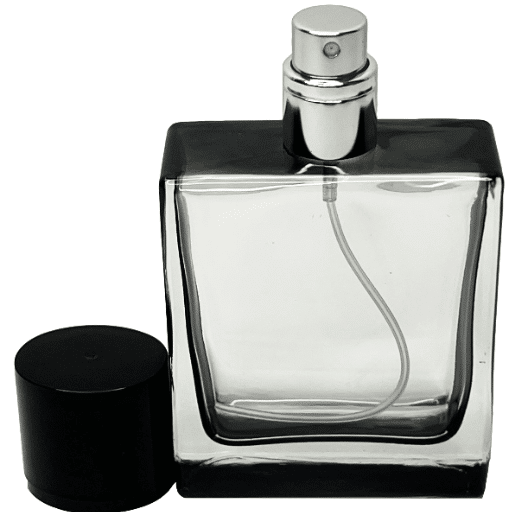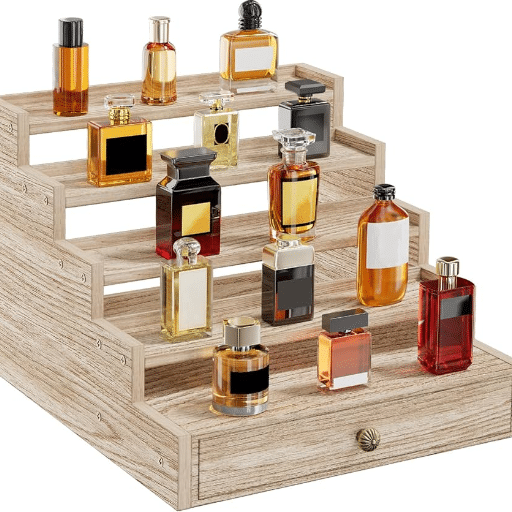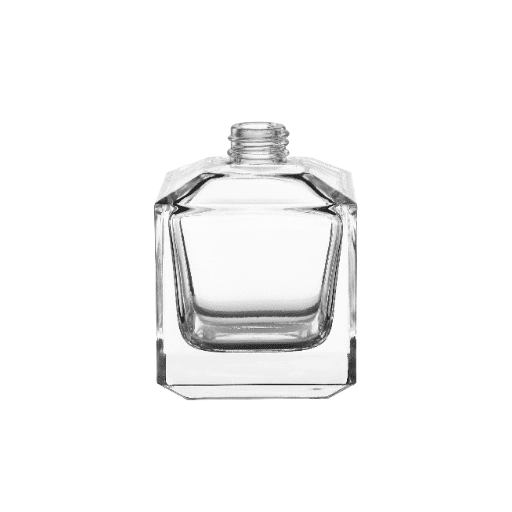Topping up your favorite perfume throughout the day can feel tricky; you want a long-lasting scent but don’t want to overdo it or waste the fragrance. But how do you do it effectively? This article will guide you through the art of reapplying your fragrance with tips to make sure your signature scent remains fresh and appealing throughout the day. We will give you practical how-to’s and important pointers whether you adore perfumes or simply want to make the most of that favorite bottle. So, know the right tricks and important details in making a touch-up to master the reapplication: read further to remain flawless in your fragrance game!
Why Should You Learn How to Refill Perfume Bottles?
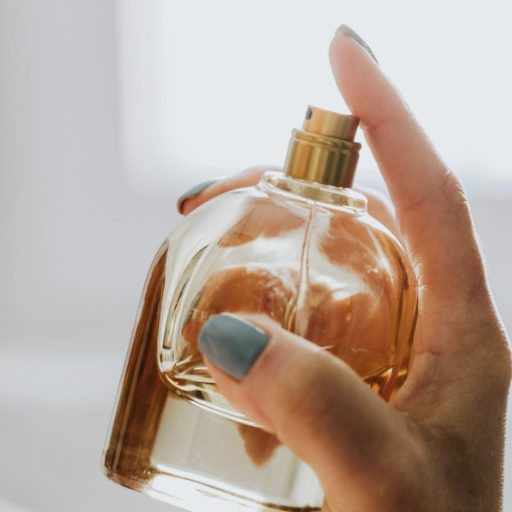
Learning how to refill perfume bottles is economical while promoting environmental sustainability. You’ll save money and have more perfume by reusing your beloved bottles rather than tossing them away. This reduces waste and supports packaging like plastic and other materials. Along with helping sustain resources, this lets you stay consistent with your favorite scent for a greener lifestyle. Maintaining sustainability reduces your carbon footprint.
Save Money by Refilling Your Favorite Perfume
Refilling your perfume bottles helps to reduce expenses without sacrificing quality. As refrains state, people save between 40-60% just by refilling their bottles instead of buying new ones. Several perfume houses and dedicated refill stations offer this service together with several high-quality brands, thus enabling consumers to purchase perfumes at a fraction price where only product and not packaging is paid.
Dior and Armani, some of the leading luxury houses, are now offering refills for their iconic fragrances to meet reusability and cost-efficiency demands. Further reports indicate that perfume packaging tends to add unnecessary expenses, meaning the cost is more than the perfume itself. Sustainably, these refill choices protect empty perfume bottles from unnecessary replacements which is better for personal budgets. Opting for refills supports an eco-friendly lifestyle while reducing expenses.
Reduce Waste from Perfume Packaging
The global beauty and fragrance industry discharges a myriad of waste, waste that is often exacerbated through the non-recyclable packaging perfumes are contained in. A study has found nearly 70% of beauty product packages are discarded, wreaking havoc on the environment, it is also exacerbating microplastic contamination within the world’s ecosystems. This societal concern is currently being addressed by brands through refillable perfume bottles and eco-friendly materials used in packaging. An example of this can be seen in the recent adoption of environmentally-friendly glass substitutes and aluminum and the abandonment of old, harmful, plastic and non-recyclable goods. There has also been a 30% increase in consumer demand regarding zero-waste beauty products in the last five years, directly incentivizing brands to adopt eco-conscious designs. All in all, these progresses display how adopting an eco-friendly approach to packaging can reduce waste and environmental strain.
Customize Your Scent Collection with Refillable Bottles
Not only do refillable perfume bottles enhance personal experience, but they are also changing the beauty industry’s approach to sustainability. Consumers can now mix and match fragrance combinations to curate their very own scents. Moreover, refillable containers help to mitigate single-use packaging waste. Recent industry data shows that the global beauty industry alone produces an estimated 120 billion units of packaging annually, a large proportion of which is nonrecyclable. Embracing refillable bottles would significantly help reduce these numbers alongside fostering a circular economy.
Convenience is now being catered to as numerous brands are now offering refill subscription services or refill stations. These options allow consumers to retain their signature scents without needing to throw away the bottle. Even luxury brands are providing elegantly crafted eco-friendly refillable bottles that blend luxury with sustainability. Purchasing these refillable bottles does more than just reduce one’s environmental footprint; it transforms the entire perfume collection into a customizable, sustainable investment.
What Tools Do You Need for Refilling a Perfume Bottle?

To refill a perfume bottle, you will need the following tools:
- A small funnel to pour the perfume without spilling.
- A syringe or dropper for precise transfer of liquid.
- The new perfume or refill fragrance to fill the bottle.
- A clean cloth or paper towel to wipe away any spills or excess liquid.
These tools ensure an efficient and mess-free refilling process.
Using a Syringe or Pipette for Precision Transfer
Pipettes and syringes are the most precise methods for transferring perfumes into bottles. With syringes, you can measure out an exact amount from a container with a 1ml or 5ml marking, thereby reducing wastage. Pipettes provide even more precision for smaller quantities, allowing for each drop to be controlled. First, make sure that your pipette and syringe are clean and dry because any contaminant will spoil your sample. Next, dip the pipette or syringe into the source of perfume, draw the desired amount, and gently let it out into the refillable bottle. Research demonstrates that this technique drastically minimizes spills when compared to freehand pouring or using funnels. This method is extremely useful while dealing with concentrated fragrances that need careful handling to prevent overpowering scents. This approach aids in optimal control during refilling, making the process effortless.
Finding the Right Funnel for Your Perfume Bottle Type
Choosing the right funnel for your perfume bottle type allows for effortless transfer from one container to another. Different funnels can be made from various materials such as stainless steel and BPA-free plastics which are durable as well as resistant to concentrated fragrances. Micro funnels are perfect for smaller bottles as they are specially designed to fit without any spillage. Standard-sized funnels can be used for wider neck bottles as they allow for faster transfers without loss of accuracy.
Research has shown that stainless steel funnels do not react with some fragrance components and will, therefore, keep the fragrance unchanged. Graduated funnels for refilling are also popular as they allow for volume measuring due to their measurements being engraved into the surface. Profound industry specialists suggest cleaning your funnels with warm soapy water and other antibacterial soaps designed specifically formulated to remove soaps and perfumes to avoid cross-contamination and maintain hygiene. These tools, along with others, will help guarantee an easier process when trying to preserve the quality of your fragrances and fragrances.
Step-by-Step Guide: How to Open and Refill Your Perfume Bottle

1. Get Your Work Space Ready
Select a tidy, even area and place a cloth or paper towel down to catch any spills.
2. Getting Rid of The Oil Bottle Cover
Gently twist or pull off the cap to his/her liking of the bottle. If the spray nozzle is attached, check if it can be unscrewed or pulled off securely.
3. Open the Refill Fragrance
Check if the refillable perfume has been properly set. If yes then great, if it has a seal, carefully take it off.
4. Be Precise With Funnels Or Syringes
Prevent excess spilling and crashing from the bottle opening using syringes or small funnels.
5. Refill Oil Bottle
Pour perfume into the selected bottle while also pumping fragrance and stopping to keep room inside in order to keep it from overflowing.
6. Seal The Bottle Securely
Prevent unintentional spillage by tightening the nozzle or cap, ensuring it will not be loose.
7. Clean up
Pick up the glitter with a dry cloth and clean the exterior of the bottle before the perfume is used.
With those simple methods stated, you are now capable of refilling a perfume bottle easily and within your constraints of time.
Removing the Crimp Perfume Sprayer Without Damage
Removing a crimped perfume sprayer has to be done carefully so that neither the bottle nor the sprayer is damaged. In this guide, we will help you accomplish the task step by step.
Collect your Materials
To remove the crimp sprayer, small pliers, thin flat screwdrivers, and a crimp removal tool unfairly made for perfume bottles is need. For hygiene purposes, ensure all instruments are clean and free of any residue.
Prevent the Bottle from Slipping
Perfume bottles can be placed on a stable flat surface as well as held on with a piece of cloth while a light grip is too relaxed to prevent slipping. Care should be taken, however, glass bottles should not be overpressured due to the risk of shattering.
Ease the Crimp Collar
In using screwdrivers to remove the crimp collar, always be gentle with the top end of the collar decal. Make sure you have enough distance from other people to ensure you don’t move loose parts (lids) around.
Removing the top collar requires allowance of natural gravity to pull it down. This is to draw the collar up evenly with even pressure that is distributed not to exceed less than minimal in smooth, small steps.
Check for Cracks
After unclamping the sprayer, check for any undesirable chips or cracks on the bottle’s neck. If the bottle looks good, then it is clean and set for use or refill.
Change to a New Sprayer(Optional)
In case you plan to replace the crimp sprayer, check that the new one fits properly. Grip it onto the vessel’s neck; if it does not fit, use a capping tool to assist in tightening the fit.
As you can see, these steps allow you to remove crimped perfume sprayers easily without damaging the bottle for additional usages. Remember to operate with moderate sluggishness and precision if you want professional results.
Transferring the Perfume from the Original Bottle
Perfume transfer is a delicate art. A perfume’s elegance comes from its cleanliness, spillage avoidance, quality maintenance, and hygienic setting. A funnel or a pipette is to start, as they reduce wastage and improve quality. A pipette is particularly effective for small quantities, therefore accuracy is ensured. All tools must be cleaned before use due to contamination risk. Fragrance contamination might alter its longevity.
For your sake, avoid concentrated vapor inhalation. A strong perfume will quickly make the air around you stale while maintaining a scent profile for a lover, as recent advancements in perfume use state. Statistics show that 15-20% of fans will decompose their favorite fragrance and place the contents in smaller travel-sized atomizers. For purposes of reducing air exposure during transfer, tilt the bottle when pouring. Air exposure during the long storage period can degrade the perfume, so work quickly while sealing the containers is required.
Guidelines are pretty clear, label the new container alongside the perfume name and put the transfer date. Tracking fragrance shelf life and optimal aroma between one to three years when cooled down are Prime reasons. Any way you look at it, following these steps ensures no quality is lost while moving and shifting your favorite fragrances.
Ensuring a Tight Seal After Refilling
Creating a perfect seal while refilling a perfume bottle will make it easier to keep the fragrance intact and also stop any evaporation. This can be done through visually inspecting the fit of the sprayer or the cap onto the bottle. A loose-fitting sprayer or a broken cap can let air into the juice and modify the perfume’s chemically stable equilibrium over an extended amount of time.
One method is looking at the attaching ring or sealing silicone on the bottle within the joining components. Putting worn gaskets in their proper places or ensuring these worn gaskets to properly positioned can eliminate leaks. Statistically, perfumes and other similar cosmetic liquids have their longevity increased with the airless environment capped storage up to 30% with increased exposure to air which speeds the oxidation reactions serves as the fuel for corrosion.
Also, the use of simple plastics and silicone can serve as an added protective layer(shell) in the neck of the bottle where extra tightness can possibly be achieved. Make sure that the cleaning action before sealing is such that the parts that come into contact with each other for sealing should be checked to ensure it won’t remain damped as a liquid. These small measures help ensure that the perfume remains fresh cushioned by years of power, potent as ever as the first scent unlocked.”
What Are the Different Types of Perfume Bottles and Their Refill Methods?
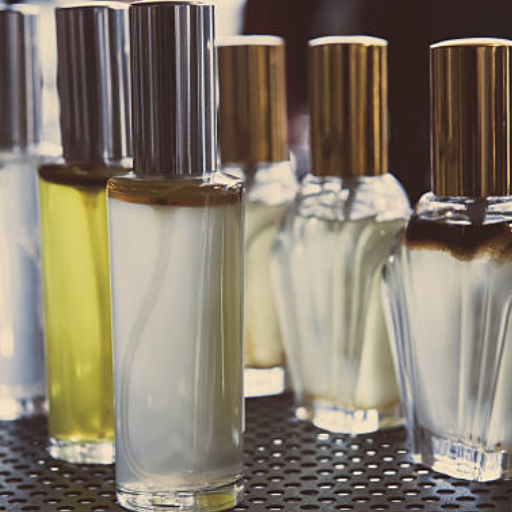
Perfume bottles come in several varieties; each with unique methods of refilling.
Spray Bottles
These are the most common type of perfume bottle with a sprayer attached. Removal with tools or slinging the perfume into the bottle with a funnel or syringe also works.
Rollerball Bottles
These bottles come equipped with a rollerball and so do these refillable ballpoint pens. Pour or inject the perfume through the opening after gently unpopping the rollerball cap.
Refillable Travel Bottles
These travel-sized containers are for easy transport and are made specifically for refilling. Legendary for their ease of use, simple pressing of the bottom valve to the spray nozzle of the original bottle permits swift transfer.
Stopper Bottles
Classic design features these as they come with a stopper instead of a spray nozzle. Refill and ye who wish to refrain, simply open and pour the perfume using a funnel.
Knowing the type of bottle you own enables you to pick the most convenient and effective refill method.
Refilling Spray Perfume Bottles
Refilling a spray perfume bottle requires special attention to preserve the fragrance and avoid spillage. To begin, check if your bottle has a removable spray nozzle because this is critical for reaching within. If the nozzle is removable, carefully grasp the bottle and pull the spray nozzle. To fill the funnel container, ensure to use a small funnel to prevent spillages stemming from overfilling. While for those unable to remove the nozzle, syringe-like refill adapters permit direct injection through the spray opening, offering no-spill refills.
Recently, it has become clear that refillable perfume systems are gaining traction most likely due to their eco-sustainability. Per reports by the industries, it is predicted that these refillable bottles have the potential to minimize wasteful packaging by roughly seventy percent, showcasing the shift in waste-positive consumer attitudes. In addition, many deluxe brands of perfumes have now started to sell them with rechargeable containers, thereby simplifying and making fragrance recharges cheaper for users. Hence, with the right strategies and tools, it is possible to make filling a spray perfume bottle a simple task with less environmental impact than purchasing new ones.
Working with Glass Bottle Designs
In most businesses such as fragrances with packed cosmetics, glass bottle designs are also of great importance because they concern functionality and beauty at the same time. Modern glass bottles must be designed in a way that they are easy to use in everyday life but at the same time attractive when displayed on the shelves. An important piece of information is that about half of the global fragrance packaging is done with glass because it preserves the scent better and can be recycled.
The rest of the information speaks to modern glass bottle designs where additional elements such as reusable pumps are incorporated together with eco-friendly materials meant for environmentally conscious customers. For instance, tempered glass technology can now produce lighter and stronger bottles which reduces the emission of transport waste by about 40 percent. In addition, features of customization, such as embossing and coatings that resist ultraviolet rays, do not only magnify brand exposure but also protect products from light harm. Aside from superior consumer experiences, these glass bottle designs improve the sustainability and efficiency of the industry.
How to Transfer Perfume Without Spills or Scent Loss?
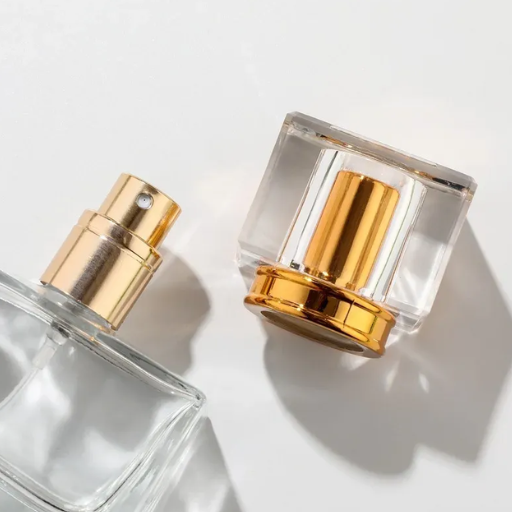
To transfer perfume without spills or scent loss, follow these steps:
- Use a Funnel
A small funnel ensures precise pouring and prevents spills. Place it securely in the opening of the receiving bottle before starting.
- Work in a Clean Area
Choose a stable surface with no distractions to avoid accidents and ensure cleanliness.
- Pour Slowly
Gently pour the perfume from one bottle to another. Avoid rushing to reduce the risk of spills.
- Secure the Bottles
Ensure both the original and receiving bottles are securely held to prevent tipping.
- Seal Tightly
After transfer, immediately seal the receiving bottle to prevent evaporation or scent loss.
These simple precautions will help you transfer perfume efficiently while preserving its quality.
Tips for Handling the Neck of the Bottle
Cleansing Steps Before Procedure
Before any transfers, the bottle’s neck must be wiped using a dry, lint-free cloth. This will guarantee there is no leftover residue that might disturb the process and ensure a seamless flow.
Funnel Utilization
While pouring, a small funnel could be used to avoid spills and consequentially reduce waste. It aids in neatly containing the liquid while preventing dripping out of the aperture.
Avoid Over-tightening
Sealing of the bottle’s cap should be done lightly. Although the cap needs to be placed securely, a full mason cap’s tightness is not suggested. Excessive tightness creates cross-threading issues.
Inspection for Cracks
The neck of the bottle should be inspected from time to time for any signs of cracks or any weakening in the structure. An impaired neck does facilitate leaking fundamentally; however, it does impair the overall functional capability.
Neck Stress Avoidance
Neck manhandling should be avoided while in motion. Ensuring lower collar bone to shoulder arm movements helps avoid delicate part breakage.
Use of Appropriate Equipment for Capping Opening
In the case where the cap is known for dealing with finger grief, rubber grips specifically designed for easy manipulation of delicate items may be found handy as it eases the article without straining the neck.
With these instructions, the handling of the perfume bottles can be done efficiently and safely during the whole process.
Leaving Proper Space at the Top
The empty space left at the top of a perfume bottle is necessary for the quality of a liquid and to avoid complications down the line. Most manufacturers recommend 10-15% of the space at the top to be left blank for air and temperature-driven expansion to be dealt with. Not only does this practice ensure that the perfume does not leak, but also helps when it comes to pressure buildup. This type of liquid pressure could result in cracking or damage over time.
This gap is said to also help with not compromising the scent due to oxidation of the perfume. When liquid is constantly touching the stopper or neck, it circulates more than necessary and it can produce an alteration in the perfume’s chemical structure. Studies show that capped perfume bottles with headroom can retain the scent profile far longer than those without headroom. Following these guidelines increases the efficacy of the fragrances.
Preventing Fragrance Contamination
Preserving a fragrance’s quality is critical in preventing its total damage. Factors like light, heat, and even air are some major contributors that cause perfumes to ruin over time. To slow these factors down, one should store their fragrance bottles in tight dark, and cold places, preferably with no exposure to direct sunlight and stagnant temperatures. Studies show that temperatures higher than 77°F (25°C) can severely accelerate the breakdown of a perfume’s intricately blended fragrance structure, which ultimately harms its quality.
Bottles of perfumes can also add a major risk of a perfume losing its scent reliability. Opening perfume bottles releases their contained air and has the potential to pull a perfume’s volatile components which alters its chemical structure. To avoid this, it is best to opt for spray bottles rather than dab bottles because the limit contact with oxygen makes them better for scent retention. Also, make sure to twist the cap tightly after every use. Other studies indicate that peoples’ aromatic integrity can lose value if not kept in its original packaging.
Ensure proper hygiene practices are maintained during application. Do not use your hands to touch the nozzle or apply fragrance directly to the skin from a roll-on that might bring back oils and dirt into the bottle. If observed, these practices will preserve your scents so that they can be enjoyed to their fullest potential for the years to come.
What Common Challenges Might You Face When Refilling Perfume?
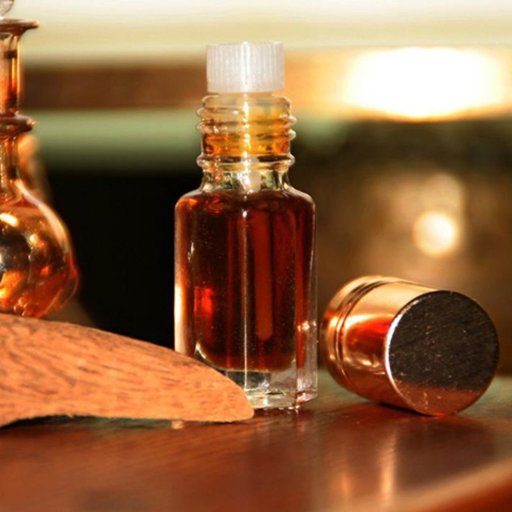
- Spillage
Perfume can spill easily during transfers due to a narrow-necked bottle or lack of a proper funnel. Use steady hands and waste-minimizing tools like pipets.
- Overfilling
Leaving an air pocket is best to avoid leaks once the bottle is sealed. Having the bottle filled too much will cause problems.
- Bottle Compatibility
Not all bottles are made to be refilled. Make sure the design of both bottles enables a safe and practical transfer.
- Fragrance Contamination
A used perfume bottle that is not cleaned properly will have residue of the previous perfume mixing with the current one, changing its scent. Clean the bottle very well before refilling.
Addressing these challenges with care ensures an efficient and seamless refill.
Troubleshooting When the Bottle Isn’t Opening
My first step in troubleshooting is making sure that I’m turning the bottle in the correct direction. From experience, some bottles have caps that can be opened in reverse. Furthermore, using warm water to loosen caps that are stuck also helps. Scrubbing stubborn caps with a rubber grip or cloth is also a good hack. In more desperate times, I use a delicate tool like pliers which allow me to slowly turn the bottle without breaking it, making sure that I don’t ruin the bottle as I do this. I have come to find out that being slow and gentle helps with many problems.
Managing Different Types of Perfume Consistency
Each type of perfume offers a different experience in terms of application styles and longevity. The more common types of perfumes are Eau de parfum, eau de toilette, and perfume oils. Eau de parfum tends to be the strongest of all types, ranging from 15% to 20% fragrance concentration, and an evocative scent of 4 to 6 hours duration. Simultaneously, eau de toilette is worn as a casual perfume and lasts for 2 to 4 hours because of its lighter concentration of 5% to 15%.
Perfume oils contain none of the alcohol, and hence have more than 20% aromatic compound concentration. This makes the scent last longer while maintaining intimacy, since the formula clings to the skin. Studies suggest that dry-skinned individuals stand to benefit from oil-based perfumes since the lack of alcohol would retain the moisture while staving off dryness and enhancing scent longevity.
For eco-conscious consumers, solid perfumes made from beeswax or plant waxes is gaining popularity among consumers. They are a good alternative as they are free from alcohol. They are also travel-friendly, hence easy for on-the-go applications. Each skin type, occasions, and personal preference have its unique formulation ensuring that everyone is catered for.
Reference Sources
-
Nano-Perfumes as A Fragrance Carrier:
- Explores the development of nano-perfumes and their application in the fragrance industry.
- Discusses innovative methods for fragrance delivery, which could include refillable systems.
- Highlights the role of nanotechnology in enhancing perfume longevity and usability.
-
Constraints in the Production and Marketing of Rose, Marigold, and Chrysanthemum:
- Focuses on the use of flowers in the perfume industry.
- While not directly about refilling, it provides insights into the raw materials and processes involved in perfume production.
-
How to Boost and Reach the Full Potential of Mugler’s Perfumes Brand Loyalty:
- Analyzes Mugler’s refill value proposition and its impact on brand loyalty.
- Discusses consumer perceptions of refillable perfume bottles and strategies to enhance the refill experience.
- Provides qualitative insights into the benefits and challenges of perfume refilling systems.
Frequently Asked Questions (FAQs)
Q: What are the steps to refill a perfume bottle without spilling?
A: To refill a perfume bottle without spilling, first ensure the bottle is clean. Use a funnel or a syringe to pour your perfume into the bottle. Hold the bottle gently and pour slowly to avoid spills. Ensure the new perfume doesn’t overflow by stopping before the bottle is completely full.
Q: How can I open a perfume bottle that is difficult to open?
A: If a perfume bottle is difficult to open, try using a rubber grip or a towel to help twist off the cap without applying too much pressure. Some bottles have a metal cap that can be gently pried open with the right tools.
Q: Are there specific tips for refilling perfume into a travel perfume bottle?
A: Yes, when refilling a travel perfume bottle, ensure the bottle is clean and use a funnel or a syringe to transfer the perfume. This helps in avoiding spills and ensures that your favorite scent stays intact when you travel.
Q: How can you refill a perfume bottle without damaging it?
A: To refill a perfume bottle without damaging it, ensure you use the right tools like a funnel or a syringe. Avoid applying too much pressure on the bottle to prevent any cracks or leaks. Additionally, gently open your perfume bottle during the process.
Q: What should I consider when choosing perfume bottle designs for refilling?
A: When selecting perfume bottle designs for refilling, consider bottles that are easy to open and have a wide opening. This makes it easier to pour your perfume without spills. Additionally, ensure the bottle is made from durable materials to withstand multiple refills.
Q: How do you handle opening perfume bottles with a roll-on top?
A: For roll-on tops, gently twist or pull to remove the roller. Use a small tool to help if necessary. Refill the bottle using a syringe to draw the perfume and ensure the roller fits back securely after refilling.
Q: What are some tips for refilling perfume from one bottle to another?
A: When transferring perfume from one bottle to another, ensure both bottles are clean and dry. Use a funnel or a syringe to transfer the liquid. Hold the bottle gently and avoid overfilling. Store your perfume in a cool, dark place to preserve its scent.
Q: How can I refill an empty perfume bottle without a funnel?
A: If you don’t have a funnel, use a syringe to accurately transfer the perfume into the empty bottle. This method minimizes spills and helps in controlling the amount of perfume being poured.
Q: What should I do if the top of the bottle is stuck?
A: If the top of the bottle is stuck, run it under warm water for a few seconds to loosen any residue that might be sealing it shut. Alternatively, gently tap around the cap with a wooden spoon to break the seal.

